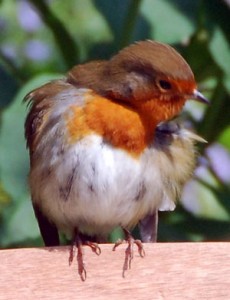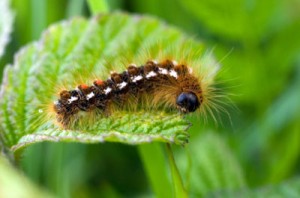The Dawn Chorus
When did you last listen to the 'dawn chorus'? April and May are the best months for hearing it, but if getting up early is a bit too much to ask, then you could pay a visit to the Breathing Places site at the BBC, where you can select a location and listen to a recording of the 'dawn chorus'. Alternatively, you can download their excellent guide to the dawn chorus and bird song.
The chorus is about the establishment of territory (by males) and the attraction of partners/mates. It is more noticeable in April and May, due to the arrival of many migratory species, such as blackcaps and swallows.  These migrants complement resident songsters such as great tits, wrens, blackbirds, robins and song thrushes.Many of the migrants will have travelled thousands of miles. The swallow, for example, overwinters in South Africa, crossing the Sahara Desert on its way. Why do they migrate? The swallow is an aerial insectivore; that is, it catches flying insects on the wing. However, during our winter there are few, if any, such insects to be had. Having made the trip to South Africa, why do they bother to come back?
These migrants complement resident songsters such as great tits, wrens, blackbirds, robins and song thrushes.Many of the migrants will have travelled thousands of miles. The swallow, for example, overwinters in South Africa, crossing the Sahara Desert on its way. Why do they migrate? The swallow is an aerial insectivore; that is, it catches flying insects on the wing. However, during our winter there are few, if any, such insects to be had. Having made the trip to South Africa, why do they bother to come back?
This seems to be largely due to competition. If they were to stay in South Africa then there would not be sufficient food there to sustain them and other insectivorous birds during their breeding season – their young feed voraciously on insects, needing protein for growth. On their return to the UK, despite the rigours of their journey, the swallows soon establish territories and 'use' their song to advertise for a mate.
Many feel that the 'dawn chorus' has become 'thinner', less voluble over time. Various bird populations have declined in the last 30/40 years, for example, those of the spotted flycatcher and red backed shrike. Even the cuckoo, which is to be found across the UK in many different habitats, is less common (making it now an amber list species). Its decline may be associated with a fall in insect numbers (it is partial to hairy caterpillars) , or fewer hosts (they lay their eggs in the nests of others birds, such as those of reed warblers and dunnocks), and / or changes in or loss of habitat or a combination of all of these.
, or fewer hosts (they lay their eggs in the nests of others birds, such as those of reed warblers and dunnocks), and / or changes in or loss of habitat or a combination of all of these.
Certainly habitat change seems to be a key factor in the decline of the turtle dove, though it is also true that many are shot during the course of migration. The problems faced by migratory species are high lighted through events like World Bird Migratory Day, which aims to raise awareness of issues such as loss of habitat (drainage of wetlands, desertification), trapping or shooting, or the effects of climate change. For more reports of animals on the move, see World on the Move at the BBC website.
Comments are closed for this post.

[…] For me, the highlight of our woodland camping trip was waking up at three in the morning and seeing the stars. They were magnificent in a clear black sky and there are thousands of them. Although everyone has seen them, it seemed to me standing outside my tent, that they were there just for me. Looking at the shadows of the woodland around I felt a deep satisfaction from being away from it all and alone with nature. Then I crept back into my tent and, despite the hard ground, I slept like a log until I was woken by the dawn chorus […]
Why camping in your own wood is special | Woodlands.co.uk
11 July, 2014